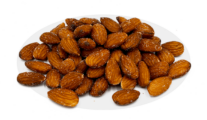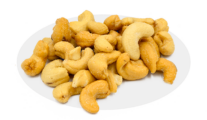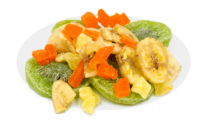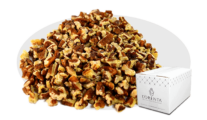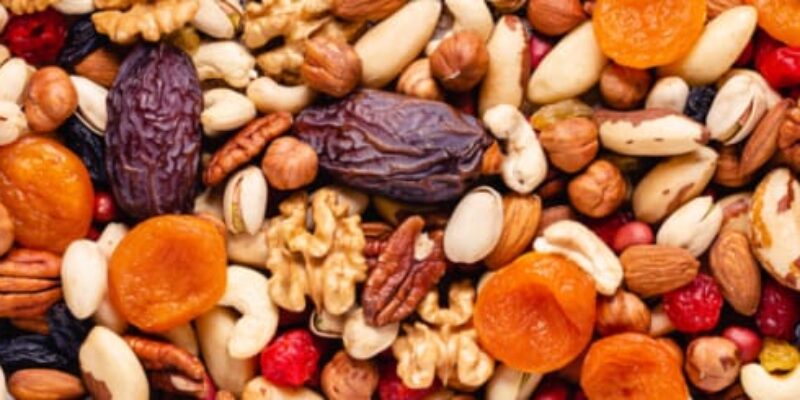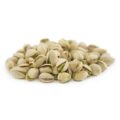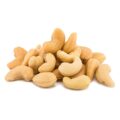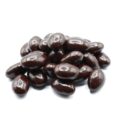Written By Sam Henselijn
This ultimate guide of 50 fun facts about nuts includes a ton of different fun facts about a variety of nuts. Enjoy reading and learning new things about cashews, almonds, macadamia nuts, pistachio, walnuts and more!
50 Fun Facts About Nuts
- Almonds can only grow when pollination occurs with bees.
- Peanuts are legumes classified as nuts due to their similar characteristics to other tree nuts.
- Walnuts are gluten-free, making them a good base for whatever needs a crust.
- The name pine nuts are because these nuts form in pinecones.
- Kale and spinach are green in color, just like pistachios, because their color pigment is the same. The antioxidant content in pistachios is one of the reasons for their green color.
- Cashews are from the poison ivy plant family. The itchy oil is primarily in their shells, so they can’t be eaten.
- Walnuts are one of the oldest tree foods dating back to 10,000 BC.
- Pistachio is widely known as a ‘happy nut’ in China and a ‘smiling nut’ in Iran.
- Macadamia nuts cannot be picked. Instead, you can only harvest from the ground when they fall off their tree.
- The tree of a brazil nut typically matures after 10 – 30 years.
- The shell of a macadamia nut is one of the hardest hence the reason they need 300 PSI of pressure to open it up after cracking.
- Brazil nuts are unique as they need a bee to pollinate them before growing.
- The pecan nut tree is the state tree of Texas, USA.
- The storage life of almonds is long as they can stay in the refrigerator for up to 2 years and still taste good. Its long shelf life is because it has a high amount of vitamin E
- The pistachio nuts are from a grape-like fruit.
- Cashew nuts are also termed fruits.
- Chestnuts contain a rich amount of vitamin C. They have about 20% of vitamin C.
- Macadamia nuts are dangerous for dogs to consume
- Brazil nuts are rich in fiber, selenium, and magnesium. Selenium is good for removing prostate cancer. Just one ounce of these nuts has over 700% of selenium, meaning that you only need to eat a small portion to benefit from it richly.
- Another name for hazelnuts is
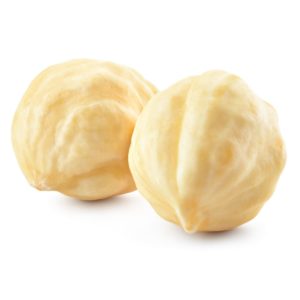 filberts, or cobnuts.
filberts, or cobnuts. - Hazelnuts are the official state nut for Oregon, USA.
- Pecan nuts have a high amount of antioxidants and vitamin E
- Pistachios are not nuts but are seeds of the fruit. The removal of the outer fruit occurs during processing.
- Pistachios have a high amount of phytochemical substances, such as carotenoids and vitamin E
- Almonds promote good gut bacteria.
- Macadamia nuts contain a good amount of omega-3 to omega-6 ratio. It helps to fight off inflammation. Macadamia nuts are also highly rich in monounsaturated fatty acids. That is why consuming it lowers the body’s LDL cholesterol, total cholesterol, and triglyceride levels.
- Walnuts are rich in omega-3
- Unlike many other nuts, chestnuts contain vitamin C.
- Chocolate manufacturers buy a large number of almonds.
- Cashews have their origin linked to Brazil.
- Pistachio trees can produce for about 300 years.
- Brazil nuts are mainly from the northern part of Bolivia.
- Pecan nuts are the first to get to the moon because they are lightweight, which astronauts could easily store and chew while giving them nutrients.
- Hazelnuts are mostly preferred for confectionery and baking because of their delicious flavor. However, a large portion of coffee and chocolates have them in them.
- Pine nuts are from pine trees – commonly known as Christmas trees. However, pine nuts can only be harvested from pine cones.
- Pine cones play a highly beneficial role to pine nuts as they protect them from intense weather conditions. When necessary, the cones close their scales.
- Botanically, almonds are classified as stone fruits related to peach, plum, and cherry fruit.
- After cracking open the internal part of the peach fruit, you will see a tiny almond look-alike seed that you must not eat.
- California is responsible for supplying about 80% of the almonds globally.
- The trees of a pistachio nut can
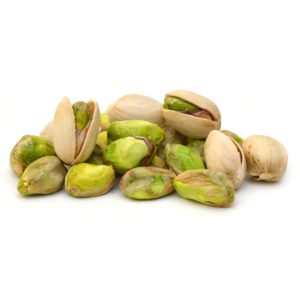 grow up to 25 to 30 feet.
grow up to 25 to 30 feet. - Turkey supplies approximately 75% of the hazelnuts in the world.
- The highest production and supply of pecans are in the United States, while the second-highest is in Mexico.
- Some pistachios are red even though they are hard to find
- Peanuts have their origin traced to Brazil and Peru.
- Peanuts primarily grow in the United States, West Africa, and China.
- Almond traces their root back to the Mediterranean countries.
- Walnuts have their roots in Persia. However, they are primarily grown in Italy, China, Turkey, Yugoslavia, the USA, Romania, France, and India.
- The Greeks named walnuts ”it for the gods” or the “nut of Jupiter:
- The brazil nut tree usually reaches a height of 150 feet, while the trunk can get to a diameter of about 8 feet.
- A large majority of pistachios are grown in Iran and Turkey.
Sam Henselijn Author’s Biography – Meet L’Orenta Nuts CEO
Copyright 2024 L’Orenta Nuts
L’Orenta Nuts proudly holds the SQF food safety certification, symbolizing our unwavering dedication to upholding the highest standards of food safety and quality. This certification guarantees that our products undergo rigorous scrutiny, ensuring transparency, traceability, and adherence to global food safety regulations for the utmost consumer confidence.
L’Orenta Nuts has the HACCP (Hazard Analysis and Critical Control Points) certification is a systematic approach to identifying, evaluating, and controlling food safety hazards. It ensures that food products are produced and handled in a manner that minimizes risks and complies with safety standards.
Our GMP (Good Manufacturing Practices) certification ensures that a manufacturing facility adheres to comprehensive quality and safety standards while producing pharmaceuticals, food, and other consumer goods, promoting consistency, quality, and compliance with regulatory requirements.
L’Orenta is an FDA-approved manufacturing facility and has met the rigorous standards set by the U.S. Food and Drug Administration. It demonstrates compliance with regulations, ensuring the production of safe and high-quality food products.


